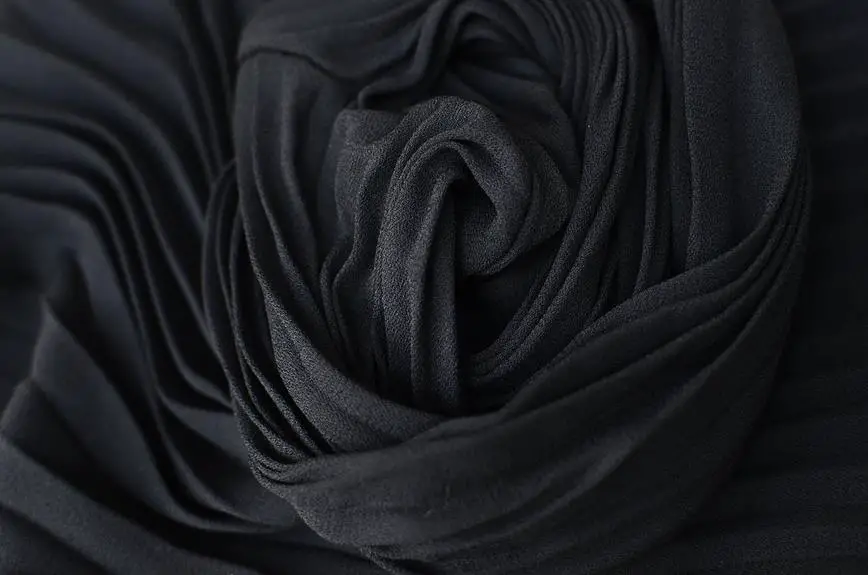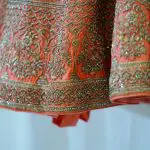If you've ever wondered which fabric is better for your wardrobe, let's delve into the characteristics of linen and wool. While both fabrics have their own unique qualities, there are certain aspects you may not know about.
By examining the pros and cons of each, we can determine the best uses for linen and wool. Whether you're seeking a breathable summer fabric or a warm winter option, understanding the properties of these textiles will help you make an informed decision.
So, let's analyze the key features of linen and wool to help you choose the right fabric for your needs.
Key Takeaways
- Linen is highly breathable and keeps cool in hot and humid conditions, while wool provides unparalleled warmth and insulation against the cold.
- Linen is eco-friendly and sustainable, requiring fewer resources to cultivate, while wool has environmental impacts such as overgrazing and soil degradation.
- Linen is prone to wrinkling and shrinkage during laundering, while wool may shrink if not cared for properly and can be itchy or uncomfortable for some people to wear directly on the skin.
- Linen is best used for summer clothing and home textiles, providing lightweight and stylish attire and effortless elegance to home decor, while wool is ideal for winter wear, thermal regulation, moisture management, and versatile layering for optimal warmth without bulkiness.
Characteristics of Linen and Wool
When considering the characteristics of linen and wool, you may find that each fabric has unique properties that make them suitable for different purposes.
Linen is known for its exceptional breathability, making it a popular choice for warm-weather clothing. The natural fibers of linen allow for maximum air flow, keeping you cool and comfortable even in hot and humid conditions. This breathability also makes linen a great option for bedding and home textiles, as it can help regulate body temperature and wick away moisture.
On the other hand, wool is prized for its unparalleled warmth. The crimped structure of wool fibers creates millions of air pockets, providing excellent insulation against the cold. This natural insulation makes wool an ideal choice for winter clothing, blankets, and outerwear. Additionally, wool has the remarkable ability to retain heat even when wet, making it a reliable option for outdoor activities in damp or snowy conditions.
Pros and Cons of Linen
One key advantage of linen is its exceptional breathability, which makes it a popular choice for warm-weather clothing and home textiles. When considering the pros and cons of linen, it's important to weigh its benefits against potential drawbacks.
Here are several advantages and disadvantages of linen:
- Advantages:
- Breathability: Linen's ability to wick moisture and allow air to flow through the fabric makes it an ideal choice for hot and humid climates.
- Durability: Linen is known for its strength, which contributes to its long lifespan compared to other natural fibers.
- Eco-friendly: Linen is biodegradable and requires fewer resources to cultivate compared to other fabrics, making it a sustainable choice.
- Disadvantages:
- Wrinkling: Linen is prone to wrinkling, which may require frequent ironing to maintain a crisp appearance.
- Shrinkage: Despite being a strong fabric, linen has a tendency to shrink, requiring special care during laundering.
- Cost: High-quality linen can be expensive due to the labor-intensive production process and limited availability of the flax plant.
Pros and Cons of Wool
Wool's advantages and drawbacks make it a fabric worth considering for various uses.
One of the most significant advantages of wool fibers is their exceptional insulating properties, keeping you warm in cold weather while also being breathable in warmer temperatures. Additionally, wool is naturally moisture-wicking and odor-resistant, making it a practical choice for activewear and outdoor clothing. Its elasticity and durability contribute to its ability to retain its shape and withstand wear and tear, making it a long-lasting investment.
However, despite its remarkable qualities, wool has some disadvantages. It can be prone to shrinking if not cared for properly, and some people may find it itchy or uncomfortable to wear directly on the skin. From a sustainability perspective, while wool is biodegradable and renewable, the intensive grazing of sheep for wool production can have environmental impacts such as overgrazing and soil degradation.
In the fashion industry, wool is highly valued for its luxurious feel and versatility, often featured in high-end suits, coats, and designer knitwear. Its natural dyes and ability to blend with other fibers make it a preferred choice for creating unique and high-quality textiles.
When considering wool, it's essential to weigh its advantages and drawbacks to make an informed decision that aligns with your needs and values.
Best Uses for Linen
To fully appreciate the versatility of linen, consider its best uses in your everyday wardrobe and home decor. Linen is a fabric known for its durability and breathability, making it an excellent choice for a variety of purposes.
- Linen Clothing: Linen's breathability makes it an ideal fabric for summer clothing. Its natural fibers allow for better air circulation, keeping you cool and comfortable in hot weather. Whether it's a linen shirt, dress, or pants, this fabric is perfect for creating stylish and lightweight summer attire.
- Home Textiles: Linen's durability makes it an excellent choice for home textiles. From bedding and curtains to tablecloths and napkins, linen adds a touch of effortless elegance to your home decor. Its ability to withstand frequent use and washing makes it a practical and long-lasting option for these items.
- Accessories: Linen accessories such as scarves, handkerchiefs, and bags aren't only fashionable but also functional. The breathability of linen makes it a great choice for accessories, especially in warmer months. Its durability ensures that these accessories will withstand daily use while adding a touch of sophistication to your ensemble.
Best Uses for Wool
When it comes to versatile fabrics, wool is a top contender, offering a range of uses across various contexts.
From winter wear to home insulation, wool proves to be an excellent choice due to its natural warmth and moisture-wicking properties.
Let's explore the practical applications of wool that make it an indispensable fabric in different aspects of daily life.
Wool for Winter Wear
Choose wool for winter wear to stay warm and comfortable in cold weather. Wool is an excellent choice for winter clothing due to its natural insulating properties and ability to regulate body temperature.
Here are three best uses for wool in winter:
- Thermal Regulation: Wool fibers have a natural crimp that creates small pockets of air, providing excellent insulation. This helps retain body heat in cold weather while also allowing breathability to prevent overheating.
- Moisture Management: Wool can absorb moisture vapor from the skin and release it into the air, keeping you dry and comfortable. This makes it ideal for layering with wool as it wicks away sweat and prevents clamminess.
- Versatile Layering: Wool garments can be easily layered to create optimal warmth without feeling bulky. Whether it's a wool sweater, cardigan, or coat, layering with wool allows for flexibility in adapting to changing temperatures.
Wool for Insulation
For winter wear, wool serves as an exceptional insulator, keeping you warm and comfortable in cold temperatures. Its natural crimp creates insulating air spaces, trapping heat and providing excellent thermal regulation. This makes wool an ideal choice for outdoor activities in chilly weather, such as hiking, skiing, or camping.
Wool's insulation properties also make it a preferred material for cold-weather accessories like hats, gloves, and socks. Unlike linen, which is renowned for its breathability and suitability for summer clothing, wool excels in providing warmth and protection in harsh conditions. Its ability to wick moisture away from the body while retaining heat further enhances its functionality for insulation.
When it comes to maintaining warmth during outdoor pursuits, wool is a top performer.
Conclusion: Choosing the Right Fabric
To make an informed decision, you should consider both the benefits and limitations of linen and wool.
When selecting fabric, it's important to consider various factors to ensure you make the right choice. Here are three key points to keep in mind when comparing materials:
- Climate and Purpose: Consider the climate in which the fabric will be used and its intended purpose. Wool is an excellent choice for insulation and warmth, making it ideal for winter clothing. On the other hand, linen's breathability and moisture-wicking properties make it perfect for summer wear and humid conditions.
- Care and Maintenance: Evaluate the level of care and maintenance each fabric requires. Wool often needs special care to prevent shrinking and distortion, while linen is relatively low-maintenance and can withstand regular washing.
- Aesthetic and Comfort: Think about the aesthetic and comfort factors. Wool provides a luxurious feel and drapes beautifully, whereas linen has a more casual, relaxed look and feel. Consider which fabric aligns best with your personal style and comfort preferences.
Frequently Asked Questions
Can Linen and Wool Fabrics Be Blended Together to Create a Hybrid Fabric?
Yes, linen and wool can be blended to create a hybrid fabric. This blending opens up possibilities for enhanced fabric performance, combining the breathability and lightweight feel of linen with the warmth and durability of wool.
Are There Any Specific Care Instructions for Maintaining the Quality of Linen and Wool Fabrics?
To maintain the quality of linen and wool fabrics, follow specific care instructions. Use gentle stain removal methods and wash according to fabric guidelines. Both fabrics are naturally wrinkle-resistant and wool is known to be moth-repellent.
What Are Some Common Myths or Misconceptions About Linen and Wool Fabrics?
Common misconceptions about linen and wool fabrics often revolve around their environmental impact and maintenance. Understanding their cultural significance can enrich your appreciation of these fabrics and help you make informed choices.
Are There Any Ethical or Sustainability Considerations When Choosing Between Linen and Wool Fabrics?
When choosing between linen and wool, ethical sourcing, environmental impact, and supply chain transparency are crucial considerations. Animal welfare is also important. Both fabrics have distinct benefits and drawbacks in these areas, so careful evaluation is necessary.
Are There Any Specific Cultural or Historical Associations With Linen and Wool Fabrics That Could Impact Their Use or Perception?
Cultural associations and historical significance greatly impact the perception and use of linen and wool fabrics. Understanding these influences can provide valuable insight into how these materials are valued and utilized in different societies throughout history.
- The Use of Nonwovens in Construction and Civil Engineering - July 11, 2025
- The Use of Nonwovens in Construction and Civil Engineering - July 11, 2025
- The Use of Nonwovens in Construction and Civil Engineering - July 11, 2025




